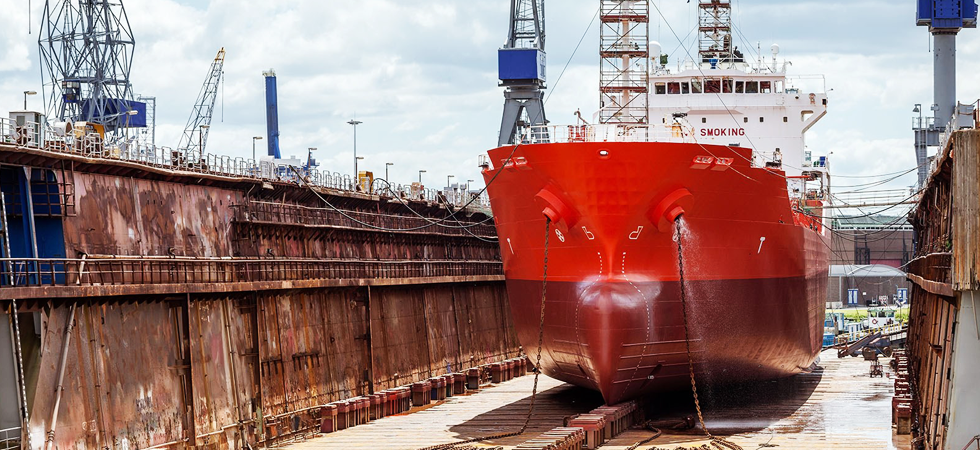
Every shipowner should know how to maintain their vessel condition. Based on the regulation, each vessel needs to go through a dry docking every year or 2 years' time. Furthermore, each vessel needs to be checked overhaul every 5 years times which usually called a special survey. Dry docking itself refers to a vessel that is brought to dry land so that the submerged part of the vessel can be cleaned, inspected, or repaired. There is a routine schedule for each vessel to be dry docked to ensure the seaworthiness of the vessel. Furthermore, dry docking allows the submerged part of the vessel to be repaired if there is any damage occurs.
To understand further about dry docking procedure, please follow the sequence as below:
1.Dry Docking Scheduling
Every vessel has its own routine schedule for dry docking. Before the schedule is due, the shipowner will search the dock space to have their dry docking services based on their availability and facility. Furthermore, the shipyard will also need the repair list and design of the vessel from the shipowner. Once both parties agree, then the dry docking can proceed.
2.Dry Docking Entry
Based on the data given by the shipowner, the shipyard will make the docking plan to arrange the block for the vessel. Once the block has been placed, the vessel can “sit” on the blocks as the water in the dock space pumped out from the dock space.
3.Washing, Blasting, and Painting
Once the water is dried out, it will be followed by washing, blasting, and painting procedure sequentially. First, the vessel will be washed using a high-pressure washer. Second, blasting is necessary to remove rust, coral, or defect paint from the vessel. The blasting can be a swift blasting or spot blasting depending on the shipowner's request. Last, the vessel will get its new paint.
4.Repair and Maintenance Process
At this period, the shipyard will conduct a repair and maintenance procedure based on the repair list given by the shipowner. The repair and maintenance include replating, maintenance work, and changing the spare parts if necessary. Starting with the engine, pumps, piping system, sea chests, even rudder, and propeller. During this period as well, the shipyard will inform the shipowner if there is any additional repair needed as the repair and maintenance procedure is running.
5.Dock Flooding
When the repair and maintenance process is complete and passed the quality control of the shipyard, the vessel will be released from the dry dock. To do so, the dry dock space will be flooded so that the vessel can float and sent out of the dry docking space for the trials and departure.
6.Trials and Departure
Once the vessel is floating, the vessel will be towed by the tugs to go to the safe area to do the sea trials to confirm the overall ship operating system. After the completion of the sea trials, the vessel is commissioned to be back into service.
Every shipowner has to plan their docking schedule since there is limited available space. Furthermore, the bigger the vessel the more difficult it is to find the shipyard that has all the facilities to do the repair and maintenance. Therefore, the sailing route, docking schedule, and shipyard facility should be part of the consideration in choosing the place for doing dry docking.
Dredgers are important machines used for excavation and land reclamation in water bodies. They come in different shapes, sizes, and types, depending on the specific purpose they are designed for. I....
Pilot boats play a vital role in ensuring the safety and efficiency of maritime transportation. These boats are designed to transport pilots to and from ships that require their expertise in navig....
Self-propelled barges are vessels that are designed to transport large quantities of cargo on inland waterways. These barges are propelled by their own engines, making them highly efficient and cos....
Barge/ Dumb Barge A barge is a flat-bottomed boat that is designed to transport goods or people on inland waterways or near-shore locations. Dumb barges, also known as unpowered barges, are t....